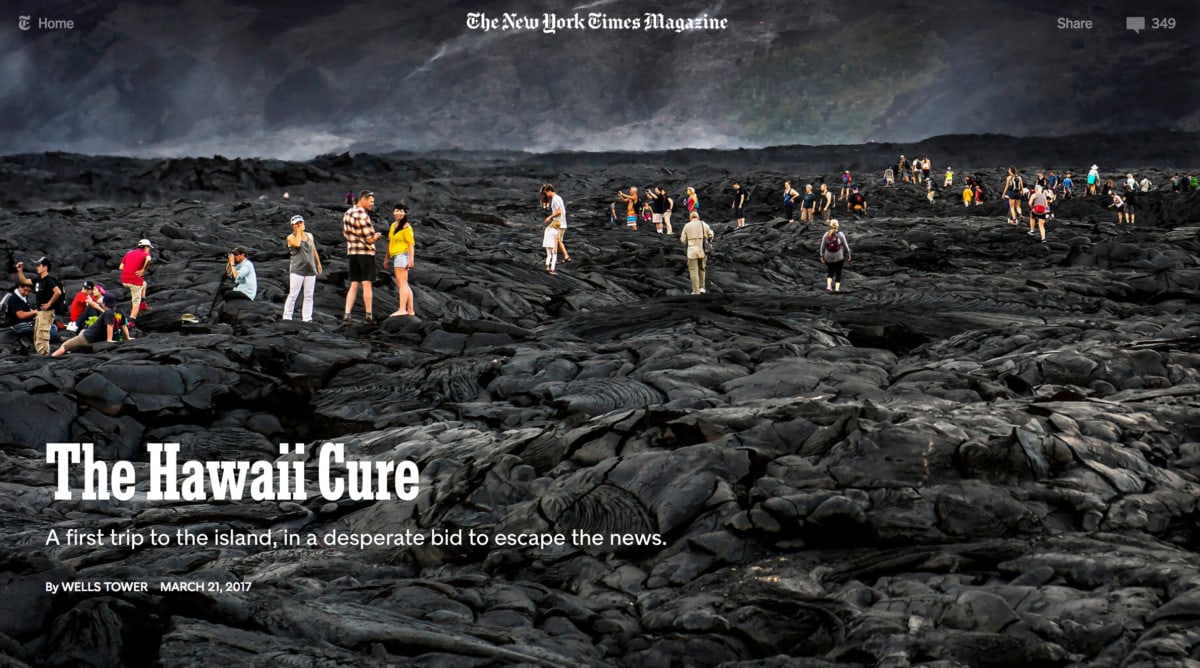Share
Who Shot It Better? Mount Rushmore: Giles Price or Lincoln Borglum
This column usually focuses on portrait photography, but the week’s cover of The New York Times Magazine got us thinking…places are people too...
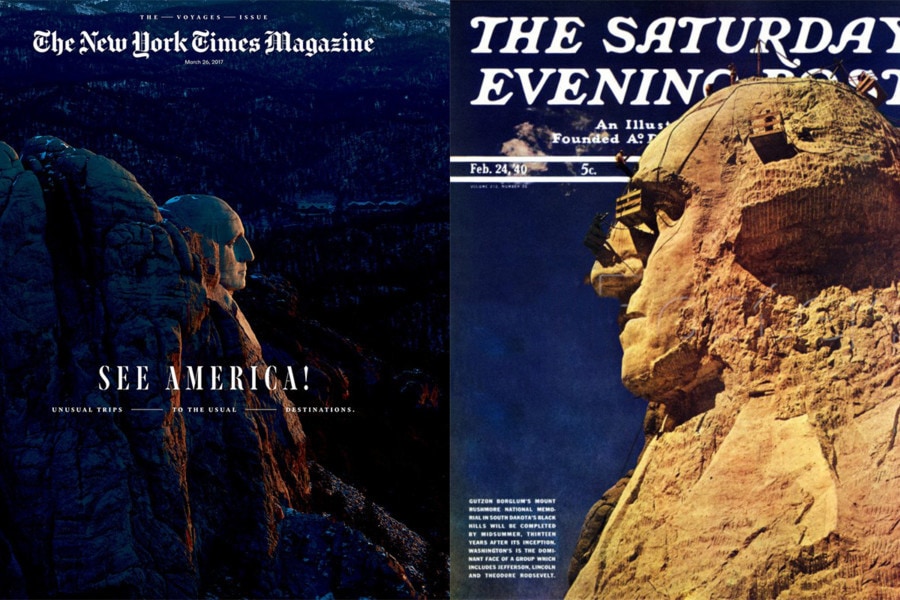
This column usually focuses on portrait photography, but the week’s cover of The New York Times Magazine got us thinking…places are people too! Or something like that. Anyway, the magazine’s annual and highly anticipated Voyages issue put one of America’s favorite monuments on display, so let’s take a look.
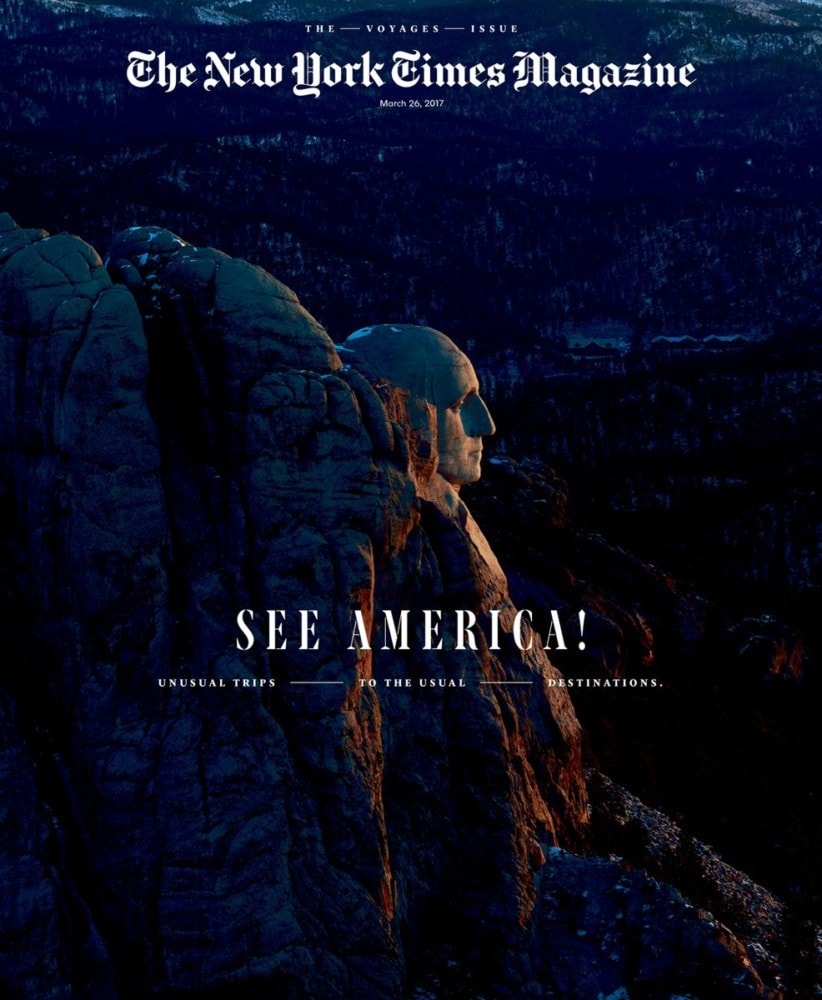
British photographer Giles Price was tapped to photograph Mount Rushmore. Price is primarily known for two things: his portrait work (he took 2nd place in the 2014 Taylor Wessing Portrait Prize) and his contemporary approach to landscape photography. His approach to the Mount is certainly atypical of the frontal, postcard view that most tourists and many publications choose. Shot after sundown, the warm artificial uplit profile of George Washington stands starkly against the blue tint of the foreground and background elements.
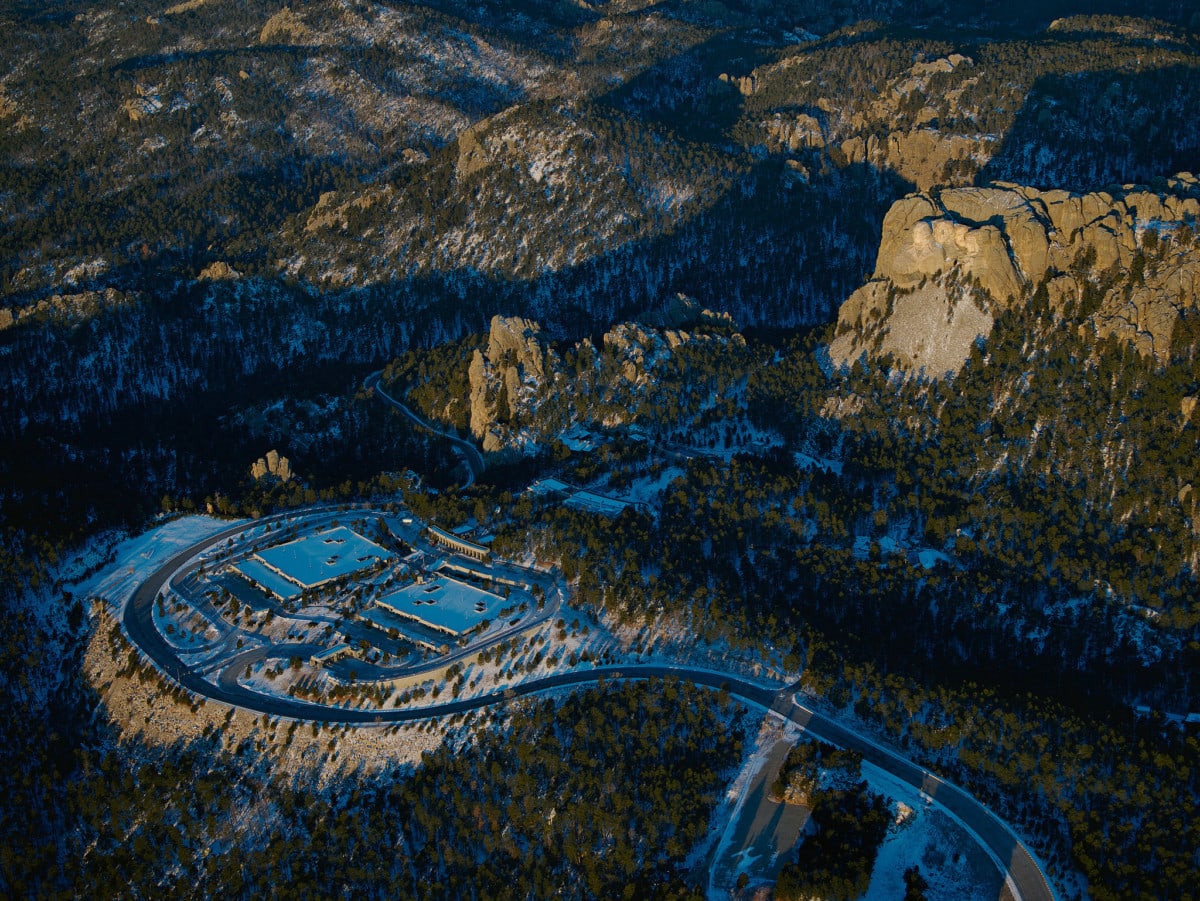
Photo by Giles Price/Institute, for The New York Times
Giles’s inset aerial shot does a nice job of contextualizing the size of the monument, while bathed in beautiful light. It’s tempting to think of Mount Rushmore as this massive carving, but in truth, after you park your car and walk through the entrance gate, the busts seem pretty small in real life. The monument is incredibly impressive (bring a telephoto lens if you visit), but it just seems smaller than in photos.
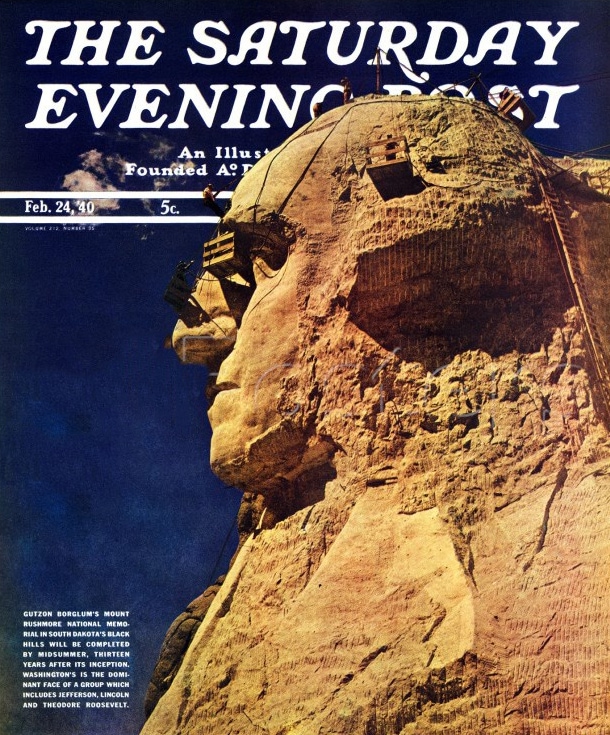
And on the other side of the ring, a cover of the Saturday Evening Post from February 24, 1940 allegedly shot by Lincoln Borglum, the son of Mount Rushmore’s sculptor, Gutzon Borglum. Upon Gutzon’s death in March 1941, Lincoln took over the project, but because the government was focused on the war effort, the memorial was declared complete in October 1941. Fun fact: the original design called for the figures to be sculpted to their waists!
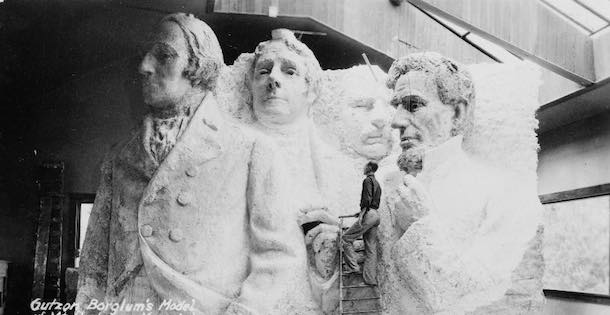
Library of Congress
Interestingly, editors at the Post picked Borglum’s photo of Washington’s profile from the opposite side 77 years before the Times! Color film sensitivity wouldn’t have allowed Borglum to take a photo like Price, so he undoubtedly had to shoot during daylight. The lighting might not be as interesting, but he captured so much great detail like the workers scaling Washington’s face while various wooden crow’s nests dot the visage. The proximity of the shot also let’s us see the vertical blast holes where rock was dynamited away.
Verdict: This is a tough one. It’s one of the first sets of images where a photographer was severely constrained by his gear. Both photographers came up with incredible images that were perfect to illustrate the subject of their accompanying articles. But I’m giving the bout to Price because his high vantage and wider focal length give us more environmental context.
Bonus! As someone born and bred in Hawai’i (no seriously, it’s on my birth certificate!), I have to give big ups to Dina Litovsky for an incredibly interesting photo of Volcanos National Park. Perfectly framed, and her post processing really makes the people pop against the darkness of the cooled lava.
